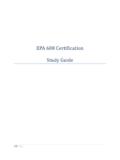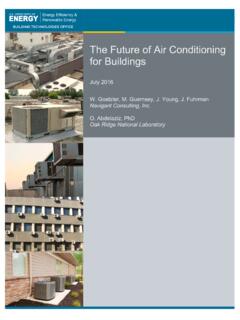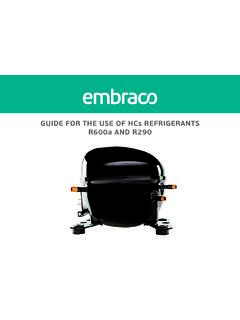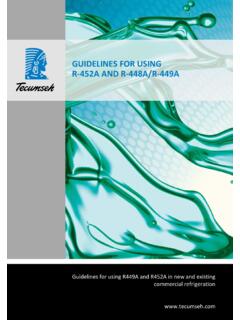Transcription of REFRIGERANT REPORT 21
1 REFRIG ERANT R EPO RT 2 1A-501-21 ENSubject to change // 80050206 // K hlmaschinenbau GmbHPeter-Schaufler-Platz 1 // 71065 Sindelfingen // GermanyTel +49 7031 932-0 // Fax +49 7031 932-147 // Alle Alle 09 09:05 REFRIGERANT ReportThis edition supersedes all previous revisions/supplements vs. 20th editionPage34667889911131717182020222324 2424252628282930333741424445 REFRIGERANT development and legal situationAlternative refrigerants overviewEnvironmental aspectsGlobal Warming and TEWI FactorEco-EfficiencyHCFC refrigerantsR22 as transitional refrigerantHFC refrigerantsR134a as a substitute for R12 and R22 Alternatives to R134aRefrigerant blendsSubstitutes for R22 in refrigeration systemsR404A and R507A as substitutes for R22 and R502R407A, R407B, R407F, R407H and R422A as substitutes for R22 and R502 Substitutes for R22 in air conditioning systems and heat pumpsR407C as substitute for R22 // R410A as substitute for R22R417A, R417B, R422D.
2 R438A and R427A as substitutes for R22R32 as substitute for R22"Low GWP" HFOs and HFO/HFC blends as alternatives to HFCsAspects on the developmentR134a alternativesSubstitutes for R404A/R507A and R410 AFurther development projectsHalogen free (natural) refrigerantsNH3(Ammonia) as alternative refrigerantR723 (NH3/DME) as an alternative to NH3R290 (Propane) as alternative REFRIGERANT // Propylene (R1270) as an alternative to PropaneCarbon dioxide R744 (CO2) as an alternative REFRIGERANT and secondary fluidRefrigerants for special applicationsLubricants for compressorsRefrigerant propertiesApplication rangesOverview lubricantsto the BITZERR efrigerant Ruler AppiOSAndroidto the digitalRefrigerant ReportRefrigerant development and legal situationStratospheric ozone depletion as well as at-mospheric greenhouse effect due to refriger-ant emissions have led to drastic changes inthe refrigeration and air conditioning tech-nology since the beginning of the is especially true for the area of com-mercial refrigeration and air conditioningsystems with their wide range of applica-tions.
3 In former years the main refrigerantsused for these systems were ozone deplet-ing types, namely R12, R22 and R502; forspecial applications R114, R12B1, R13B1,R13 and R503 were use of these substances is no longerallowed in industrialised countries, but theuse of R22 has been extended through tran-sitional periods. However, the EuropeanUnion also commited to an early phase-outfor R22, which was enforced in severalstages (see page 8). The main reason forthis early ban of R22 contrary to the inter-national agreement is the ozone depletionpotential although it is only small. Since 2010, phase-out regulations becameeffective in other countries as well, forinstance in the implies enormous consequences forthe whole refrigeration and air conditioningsector.
4 BITZER therefore committed itself totaking a leading role in the research anddevelopment of environmentally friendly sys-tem the chlorine-free (ODP = 0) HFC refriger-ants R134a, R404A, R407C, R507A andR410A have become widely established formany years in commercial refrigeration, airconditioning and heat pump systems, newchallenges have come up. They concern pri-marily the greenhouse effect: The aim is aclear reduction of direct emissions causedby REFRIGERANT losses and indirect emissionsby particularly efficient system this area, applicable legal regulations arealready in force, such as the EU F-Gas Regulation No. 517/2014 (BITZER brochure A-510) and a series of regulations alreadyratified or in preparation as part of the EUEcodesign Directive (BITZER brochure A-530).
5 Similar regulations are also inpreparation or already implemented in Aus-tralia, Canada and the USA. On an inter-national level, the so-called "Kigali Amend-ment" was adopted in 2016 under theMontreal Protocol, in which a step-by-stepreduction of HFCs ("HFC phase-down") wasagreed upon starting in though indirect emissions caused byenergy production are considerably higherthan direct (CO2-equivalent) emissionscaused by HFC refrigerants, refrigerantswith high global warming potential (GWP)will in the future be subject to use restrictionsor bans. This will affect primarily R404A andR507A, for which alternatives with lowerGWP are already being offered. However, inorder to achieve the legal objectives, substi-tutes for further refrigerants and increaseduse of naturally occurring substances (NH3,CO2, hydrocarbons) will become requires comprehensive testing ofthese refrigerants, suitable oils and adjustedsystems.
6 Therefore a close co-operationexists with scientific institutions, the refriger-ation and oil industries, component manu-facturers as well as a number of innovativerefrigeration and air conditioning large number of development tasks havebeen completed. Suitable compressors foralternative refrigerants are the development projects, BITZER actively supports legal regulations and selfcommitments concerning the responsibleuse of refrigerants as well as measures toincrease system and components following REPORT deals with potentialmeasures of a short to medium-term changetowards technologies with reduced environ-mental impact in medium and large sizecommercial and industrial refrigeration, airconditioning and heat pump , the experiences so far and theresulting consequences for plant technologyare discussed.
7 Several studies confirm that vapour com-pression refrigeration systems normallyused commercially are far superior in effi-ciency to all other processes down to a coldspace temperature of around -40 selection of an alternative refrigerantand the system design receives special sig-nificance, however. Besides the request forsubstances without ozone depletion poten-tial (ODP = 0) especially the energy de-mand of a system is seen as an essentialcriterion due to its indirect contribution tothe greenhouse effect. On top of that thereis the direct global warming potential (GWP)due to REFRIGERANT a calculation method has beendeveloped for the qualified evaluation of asystem which enables an analysis of thetotal influence on the greenhouse so-called "TEWI" factor (Total Equiva-lent Warming Impact) has been , another, more extensiveassessment method has been developedconsidering "Eco-Efficiency".
8 Hereby, bothecological (such as TEWI) and economicalcriteria are taken into account (furtherexplanations see page 7).Therefore it is possible that the assessmentof refrigerants with regard to the environmentcan differ according to the place of installa-tion and drive closer evaluation of substitutes for theoriginally used CFC and HCFC as well asfor HFCs with higher GWP, the options withsingle-substance refrigerants are very limit-ed. This includes R134a, which will beusable for quite some time based on itscomparatively low GWP. Similarly, thehydro-fluoro-olefins (HFO) R1234yf andR1234ze(E) with a GWP < 10, which arealso exempted from the F-Gas alternatives (based on fluorinatedhydrocarbons) for almost all refrigerants ofhigher volumetric refrigerating capacity andpressure level than R134a can (mainly) onlybe "formulated" as blends.
9 However, takinginto account thermodynamic properties,flammability, toxicity and global warmingpotential, the list of potential candidates isvery limited. Blends of reduced GWP in-clude in addition to R134a, R1234yf andR1234ze(E) primarily the refrigerants R32,R125 and halogenated refrigerants, Ammonia(NH3) and hydrocarbons are considered assubstitutes as well. The use for commercialapplications, however, is limited by strictsafety dioxide (CO2) becomes more impor-tant as an alternative REFRIGERANT and sec-ondary fluid, too. Due to its specific charac-teristics, however, there are restrictions to ageneral following illustrations show a structuralsurvey of the alternative refrigerants and asummary of the single or blended substanceswhich are now available.
10 After that the indi-vidual subjects are REFRIGERANT properties, applicationranges and lubricant specifications, seepages 42 to reasons of clarity the less or onlyregionally known products are not specifiedin this issue, which is not intended to implyany 1 Structural classification of refrigerants * Service refrigerants contain HCFC as blend component. They are therefore subject to the same legal regulations as R22 (see page 8). As a result of the continued refurbishment of older installations, the importance of these refrigerants is clearly on the decline. For some of them, production has already beendiscontinued. However, because of the development history of service blends, these refrigerants will continue to be covered in this 1 Substitutes for CFC and HCFC refrigerants (chlorine free HFCs) Alternative refrigerants overviewFormer AlternativesRefrigerants ASHRAE Trade name Composition Detailed Classification (with blends)







